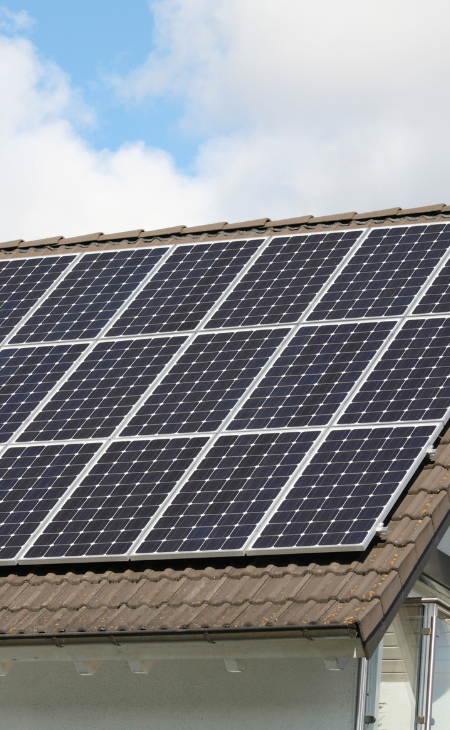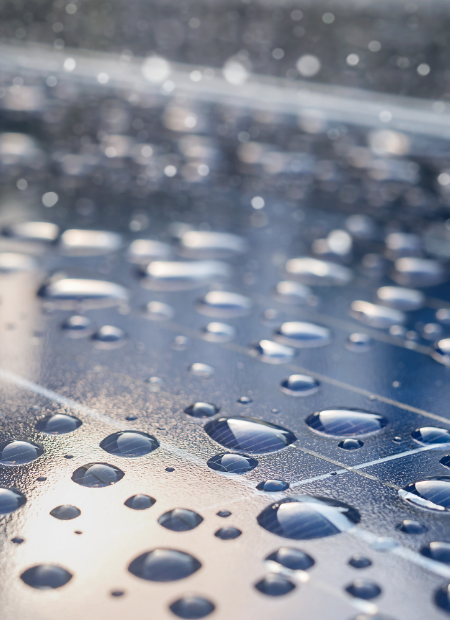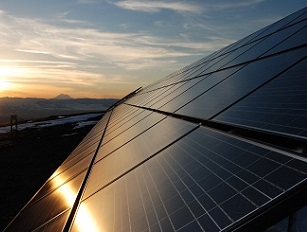 Free delivery on orders over £75 ex VAT
Free delivery on orders over £75 ex VAT Free click & collect from branches nationwide
Free click & collect from branches nationwideWith the popularity of solar panels rising in the UK, with many property and business owners taking advantage by switching to this eco-friendly and energy-efficient system.
Free, limitless energy that can lower your carbon footprint and shave hundreds of pounds off your energy bills each year - it’s no surprise that more home and business owners than ever before are taking advantage of solar panels.
In fact, solar panels are estimated to save approximately £175 and £420 a year off energy bills for homeowners - and much more for businesses with plenty of usable roof space. But what about those who live in flats and apartments?
Thanks to the Cost of Living Crisis, the increasing cost of electricity, backed by the rising concern for the environment, many flat tenants are asking if solar panels can also be used in flats? And what type of solar panels are allowed to be installed in flats?
There are, as always, some unique challenges and considerations that need to be taken into account when considering solar power for flats. We've done the research on which solar panels you can use in your flat, and the potential advantages of installing a solar panel in an apartment.
Our extensive guide will give you a rundown of all the details you need to know before investing in a new solar system.
First, we need to identify the 2 main common types of Solar Panel currently available: polycrystalline solar panels and monocrystalline solar panels.
There are a few other types of solar panels available, however these are the main two types used commercially.
Can Polycrystalline Solar Panels be used on Flats?
Polycrystalline solar panels are one of the most common types of solar panels that are best suited for installation on a flat roof, making them an excellent choice for apartment buildings.
This type of Solar Panel is constructed from melted silicon crystals that are cast into a mould, which gives them a blue or black appearance - doing this, however, makes them less efficient than monocrystalline solar panels. Still, they are considered more cost-effective as they are less expensive.
For installing polycrystalline solar panels, there are a few things to consider…
- Ensure the roof is in good condition to be able to support the weight of the panels.
- Make sure the Solar Panels are angled using a racking system - so they face the sun as much as possible.
- Make sure the solar panels are correctly wired and connected to the inverter to allow for the change of current. The inverter is typically located in either the garage or loft.
Can Monocrystalline Solar Panels be used on Flats?
Monocrystalline solar panels are constructed from a single crystal of silicon, which gives them their characteristic blue color. This means they are a lot more efficient than polycrystalline Solar Panels but are considered to be a lot more expensive.
They are, on the other hand, a feasible option for installation for apartment buildings because they can generate a lot more electricity on a smaller scale in comparison to polycrystalline panels.
They can also maximize the amount of energy in areas of lower sunlight - such as areas with frequent clouds, shade, or sun blockages such as trees or tall buildings.
It is always important to check whether planning permission is required, however, it’s equally important to speak with not only the landlord of the flat but also the owner of the apartment building before installing Solar Panels
Regardless of which type of Solar Panel gets installed onto the roof of the apartment building, there are some additional pointers to keep in mind when it comes to installation:
- Shading - If the roof of the building is shaded by trees or other structures for part of the day, you may need to consider installing additional panels to generate the same amount of electricity.
- Wind - Stronger mounting systems might be required if the area is prone to getting solid winds so that the solar panels are secure.
- Snow - If the area you live in gets a lot of snow during the colder months, investing in snow guards can help prevent the panels from being damaged.

Where Should You Place Solar Panels for Flats?
The perfect placement for Solar Panels on apartment buildings is ideally on a south-facing roof with a tilt angle of between 20 and 50 degrees, as this will help maximize the amount of sunlight that the panels receive and, in return, how much electricity gets generated.
If the roof of the apartment building isn't south facing, you may still be able to install solar panels. However, you may be required to install more panels to generate a consistent amount of electricity to meet the necessary demand for the flat tenants, significantly if the roof is obstructed by trees or other apartment buildings.
Alternatively, suppose you have a balcony, and it's impossible to have Solar Panels installed on the roof of the apartment building. In that case, you can instead look into investing in a mounted solar panel which can sit on the railing or even on the floor.
Advantages of Using Solar Panels for Flats
Save on Energy Bills
By incorporating solar panels, you can generate electricity and decrease dependence on the traditional power grid while also cutting costs. With an average saving of £10,000 over the system's lifetime, solar panels offer an excellent opportunity to reduce your energy expenses.
Reduce your Carbon Footprint
Solar panels will generate electricity by absorbing energy from the sun's abundant light, which is a renewable energy source. This will significantly offset your carbon footprint and contribute to a cleaner environment.
Increase your Property Value
Typically, Solar panels can increase the value of homeowners' properties, so they will more than likely increase the value of the apartment building as well. Tenants may also benefit and see a reduction in energy costs as well.
Earn Money for Excess Energy
Any excess energy your solar panels produce can be sold to the grid in the UK. This method is called net metering. It also allows you to buy back power as well.
Low maintenance
Solar panels are highly durable that require very little maintenance, but once in a while, they may need to be cleaned.
Long lifespan
Investing in solar panels can provide long-term benefits as they have a lifespan of 25-30 years, ensuring years of reliable solar power generation for your home or business.


Disadvantages of Using Solar Panels for Flats
Whilst solar panels are generally an economical and ecological win for everyone involved, there are a few key considerations to keep in mind if you plan on installing solar panels in your apartment:
High Upfront Cost
Both solar panels themselves and their installation costs can be expensive. However, the cost of solar panels has been declining in recent years, and the savings on your energy bills can offset the upfront cost over time.
Not all Dwellings are Suitable
Solar Panels that get installed onto smaller homes or buildings will benefit less compared to larger homes where there is more space on the roof for more Solar panels.
For apartments, you may be limited if you’re on a mid or bottom floor apartment and don’t have access to the roof.
May require Landlord's Permission
Especially for a block of flats or if you rent your home, you may need to get your landlord's permission before you can install solar panels.
Affected by Weather
Solar panels can be affected by changing weather conditions such as clouds, rain or snow. Solar Panels will still generate electricity in these conditions, but not as much compared to clear weather.
FAQs
How Many Solar Panels Do I Need?
To determine how many solar panels you need, you'll want to consider a few factors, such as energy usage, the size of the panels, and the amount of sunlight the roof receives.
As a guideline, you can divide your annual energy usage by the average output of a solar panel in your area, which will give you a reasonable estimate. We also recommend checking out our Solar Panel Kit Builder to provide you with a better understanding of how many you may need.
How do Solar Panels Fix onto a Roof?
To fix solar panels onto a roof, you will first need mounting rails, which get bolted onto the roof to support the Solar Panel.
Next, the Solar Panel is attached to the mounting rails by their specifically designed clips which bolt onto the edges of the panel.
Once attached, the cable from the solar panel can get fed under a tile and into the roof space, where it is connected to the inverter. If the inverter is located in a garage, you must ensure the cable can be fed through the property.
Do Solar Panels Work in the Winter?
Yes, Solar Panels will work in the winter. This is because Solar Panels rely on the Sun's abundant light rather than the Sun's heat. The abundant light will be absorbed by the solar panel, which will generate a DC current.
If you want to learn more about Solar Panels and have more questions, check out our Solar Panel FAQs, where we answered more of the nation's questions.
If you are installing Solar Panels for the first time, take advantage of our Solar PV Kit Builder and read about Solar Panel installation best practices that will help you find the panels you need and help you deliver a safe and professional installation.
If you are replacing existing Solar Panels, then it might be beneficial to learn about what happens to Solar Panels when they come to the end of their lifecycle with the Solar Recycling Scheme.
City Plumbing is a market leader for providing homeowners and their installers with market-leading solar panel equipment. View our great range of solar panels for sale with quick delivery or collection from your local branch.
Other articles

Solar Recycling Scheme - Everything you need to know
27 Jul 2023 ・ 5 mins

Solar Panels FAQs - Your Common Questions Answered
31 May 2023 ・ 7 mins

Solar Panel Installation Best Practices
15 May 2023 ・ 6 mins

How to become a renewable energy engineer
03 Mar 2022 ・ 7 mins

